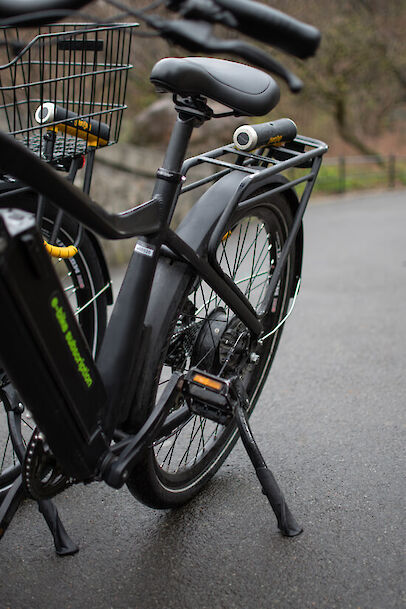Battery
Types of electric bike batteries (Pros and cons)
Sep 25, 24
Electric bikes are the future of urban commuting. They help us reach our destination, work as delivery riders, explore the outdoors, and even exercise.
Battery is its main component, determining its range and performance. It is the powerhouse that supplies e-bikes with the necessary energy.
However, not all batteries are the same. There are several different types of electric bike batteries, and it’s important to understand them all, especially if you use your e-bike for your job.

Lead-acid batteries were the first type of batteries used for e-bikes. They consist of lead plates immersed in a sulfuric acid electrolyte solution.
Pros:
Cons:
Applications:
These batteries are considered outdated, so they’re typically not the first choice for most manufacturers. Still, some inexpensive models still use them.
They are often found on entry-level or budget-friendly electric bikes, where affordability is one of the main traits.
Other than e-bikes, they are typically found in industrial applications, as they are very reliable and provide sudden bursts of power.
NiMH (Nickel-Metal Hydride) batteries were a popular choice for electric bikes before the appearance lithium-ion batteries. They are considered better than lead-acid batteries, but still not as good as lithium-ion ones.
Pros:
Cons:
Applications:
While they’re no longer common, NiMH batteries are still used in some hybrid e-bikes that use both pedal power and electric assistance.
They are also found on e-bikes used in specific industries or ones used for research.
Next to that, they are used in portable electronic devices, such as cameras, power tools, and toys. Also, they are a good choice for remote areas with limited access to electricity.
Lithium-ion, most commonly Lithium-Ion 18650 batteries are a standard for electric bikes.
There are two types of Li-ion batteries:
Generally, though, both of these have the same pros and cons compared to other battery types.
Pros:
Cons:
Applications:
Lithium-ion batteries are a go-to choice for most e-bike manufacturers. Their numerous pros make them very popular, so most modern e-bikes use them.
In fact, you’ll hardly find an e-bike that isn’t powered on a lithium-ion battery nowadays.
Related: How long does it take to charge an electric bike
Choosing the right battery type is one of the most important decisions of every e-bike rider, even though most of us make the choice without even realizing it, as our favorite bikes already have a specific type of battery on them.
Each type has its own pros and cons, so if you’re a true enthusiast, make sure to weigh all the advantages and limitations before making a purchase.
Whizz uses high-quality, Samsung-cell lithium-ion batteries that have a range of up to 85 miles. If this isn’t enough, or you simply want to stay on the safe side, you can always buy a replacement battery at an affordable price!
Lithium-ion batteries are the pinnacle of modern technology when it comes to electric bikes, and you can hardly go wrong with them.
Contact Whizz and start riding your new e-bike today!
Read Also: How to test electric bike battery
How long does an electric bike battery last before needing replacement?
The lifespan of an electric bike battery varies on numerous factors. In general, most batteries will last 2 to 3 years, or 500 to 1,000 charge cycles.
However, this can be increased or lowered depending on the maintenance, usage, and type.
How can I maximize the lifespan of my e-bike battery?
One of the main things you can do to increase your lithium-ion battery’s lifespan is to change the way you’re charging it.
Don’t wait until it depletes entirely. Instead, charge it as soon as it drops to 20-25%. Also, don’t charge it all the way – stop when it’s at around 90%.
When not using your e-bike, charge it to around 50% and recharge it every few weeks or months.
Does the way I ride my e-bike affect battery life?
Another factor that affects your battery’s life is your riding style. If you constantly ride your e-bike uphill or with high accelerations, you will deplete it sooner.
This means it will require more frequent charging, which will lower its lifespan. Try using high levels of pedal assist to lower the strain on the battery, increasing its life expectancy.
Réserver mon vélo électrique
Nous confirmerons votre réservation par un appel téléphonique.
Obtenez votre trajet sans tracas –
aucun SSN requis !
Étape 1
Réservez votre véhicule maintenant
Étape 2
Réussissez la vérification en ligne
Étape 3
Récupérez votre vélo ou votre cyclomoteur à New York ou faites-vous livrer
